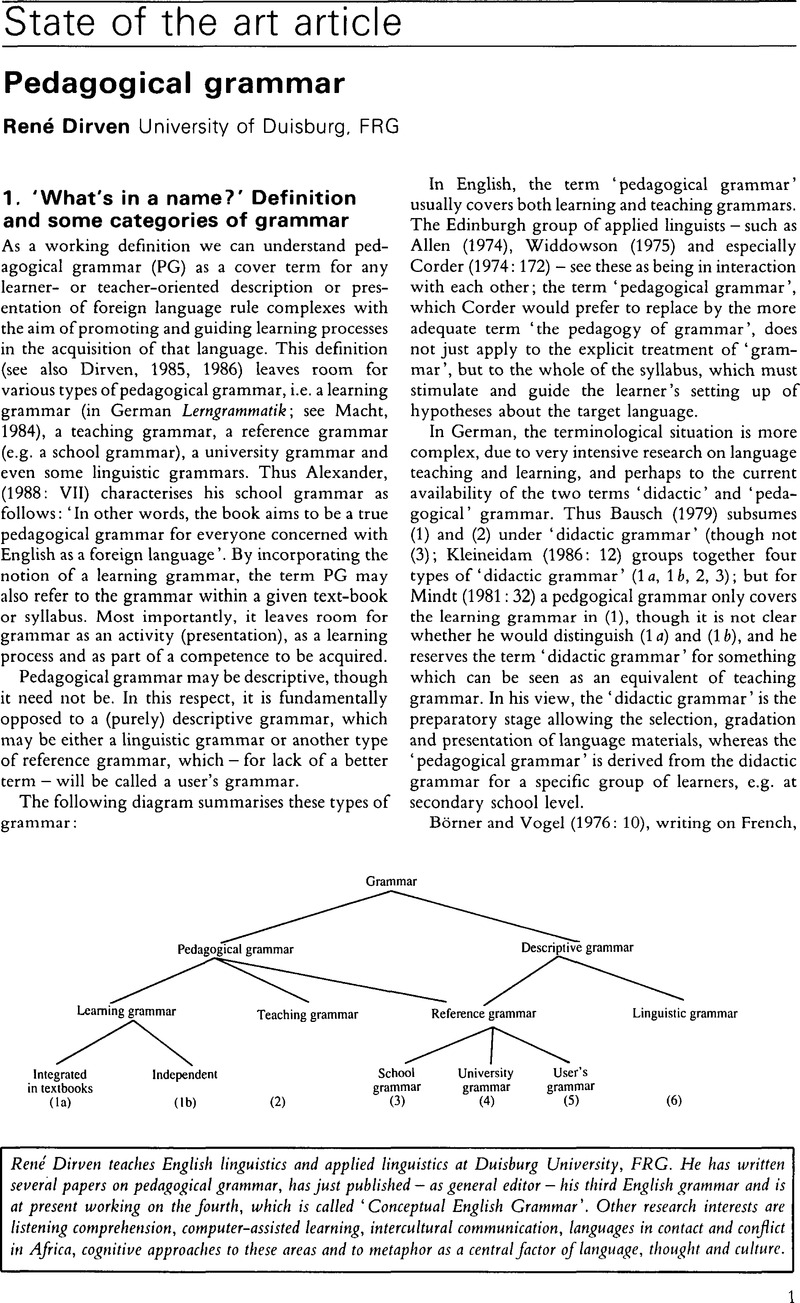Crossref Citations
This article has been cited by the following publications. This list is generated based on data provided by Crossref.
KUMARAVADIVELU, B.
1992.
Macrostrategies for the Second/Foreign Language Teacher.
The Modern Language Journal,
Vol. 76,
Issue. 1,
p.
41.
Goodfellow, Robin
and
Metcalfe, Peter
1997.
The challenge – back to basics or brave new world?.
ReCALL,
Vol. 9,
Issue. 2,
p.
4.
Hadley, Gregory
2002.
An Introduction To Data-Driven Learning.
RELC Journal,
Vol. 33,
Issue. 2,
p.
99.
Rimmer, Wayne
2006.
Measuring grammatical complexity: the Gordian knot.
Language Testing,
Vol. 23,
Issue. 4,
p.
497.
STRAUSS, SUSAN
LEE, JIHYE
and
AHN, KYUNGJA
2006.
Applying Conceptual Grammar to Advanced‐Level Language Teaching: The Case of Two Completive Constructions in Korean.
The Modern Language Journal,
Vol. 90,
Issue. 2,
p.
185.
Carrasco, Nuria
and
Devís Márquez, P.
2008.
Sobre los Contenidos Gramaticales en el Aula de Lengua Extranjera.
Verbum,
Vol. 10,
Issue. 2,
p.
485.
Roehr, Karen
2008.
Linguistic and metalinguistic categories in second language learning.
Cognitive Linguistics,
Vol. 19,
Issue. 1,
Newby, David
2015.
The role of theory in pedagogical grammar: A Cognitive + Communicative approach.
Eurasian Journal of Applied Linguistics,
Vol. 1,
Issue. 2,
p.
13.
Um, Tae-Kyung
2016.
On the Notion of 5 Sentence Patterns in English Grammar Learning Materials.
The Journal of the Korea Contents Association,
Vol. 16,
Issue. 6,
p.
283.
Derewianka, Beverly
2019.
Second Handbook of English Language Teaching.
p.
1.
Derewianka, Beverly
2019.
Second Handbook of English Language Teaching.
p.
1.
Derewianka, Beverly
2019.
Second Handbook of English Language Teaching.
p.
821.
BOSSAN, RITA
2021.
A Comparative Exploration of some Structures of English Language and Idoma Sentences.
All Nations University Journal of Applied Thought,
p.
17.
BOSSAN, RITA
and
OTSANYA OBANDE, SUSAN
2021.
A Comparative Exploration of some Structures of English Language and Idoma Sentences.
All Nations University Journal of Applied Thought,
p.
17.
BOSSAN, RITA
and
OTSANYA OBANDE, SUSAN
2021.
A Comparative Exploration of some Structures of English Language and Idoma Sentences.
All Nations University Journal of Applied Thought,
p.
17.
BOSSAN, RITA
2021.
A Comparative Exploration of some Structures of English Language and Idoma Sentences.
All Nations University Journal of Applied Thought,
p.
17.
Mohamed-Habib, Kahlaoui
2022.
World Englishes, Global Classrooms.
p.
95.
Khalina, Natalya V.
Pivkina, Nadezhda N.
and
Borzhikov, Temirlan S.
2023.
Evidential Markers of Virtual Reality: Linguistic Markup of the Navigation Route.
p.
375.
2024.
Textbook English.
Vol. 116,
Issue. ,
Mohamed-Habib, Kahlaoui
2025.
Weltenglisch, Globale Klassenzimmer.
p.
109.


